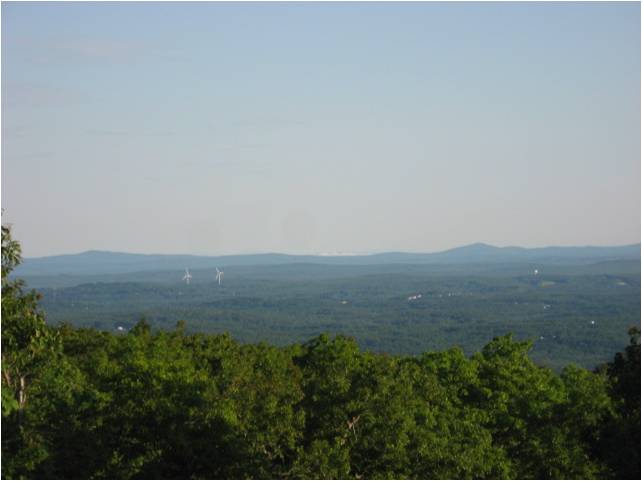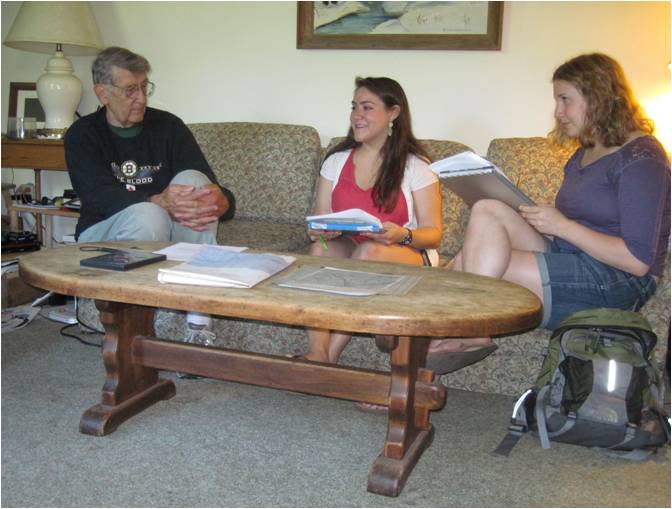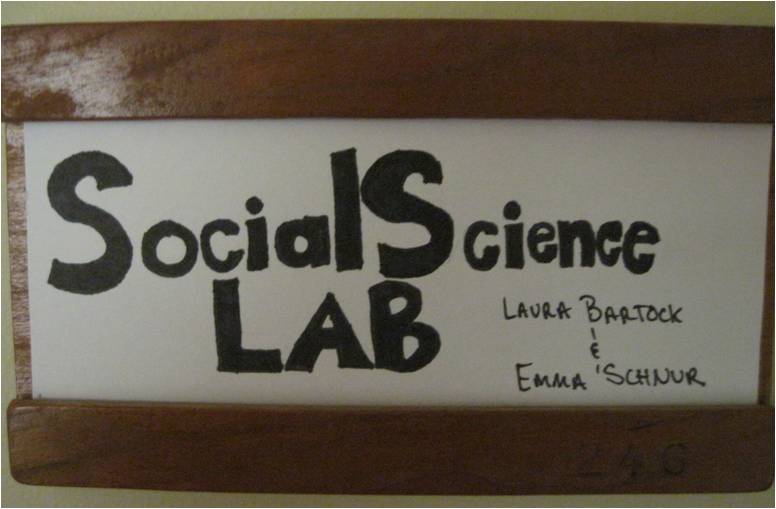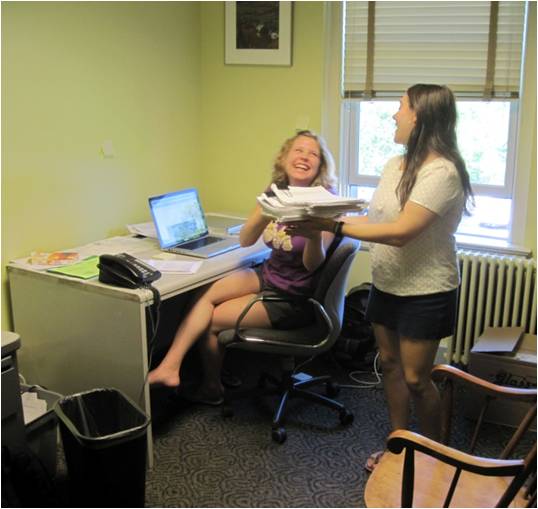You are here
Conservation awareness
Massachusetts is the third most densely populated state, but it is also the eighth most forested with more than 60% of the commonwealth covered by woodland. Of all this vast forested land, private families own more than 75% of it. That means that the future of our forests is in the hands of families just like yours and mine. In order to understand how the forests may change in time, we need to understand how these families are making decisions about their woodlands.
That’s why we’re here this summer. We’re working with Dave Kittredge of UMass Amherst on employing the fourth iteration of the Conservation Awareness Index (CAI 4.0). CAI is used to measure the knowledge of landowners on conservation and land management programs, such as conservation restrictions or timber harvesting. In previous studies, CAI has been sent out as a survey to landowners across the commonwealth. This time around, we’re using it in an interview format in order to gain more insight into the decision making process of landowners and their family units.
So, while most of our colleagues are out in the field, catching butterflies, counting carbon atoms, and getting bitten by mosquitoes and ticks, we work on the second floor of Shaler Hall in the Social Science Laboratory. We send letters, call potential interviewees, play phone tag, and eventually sit down and talk with them about their land. Our exploratory study is not only the first time that CAI is being used as an interview, but also the first time we’re reaching out to the adult children of landowners who will be inheriting their parents’ land in the future.
Through these interviews, we’re looking for generational differences in knowledge that will help us predict how forest management will change with the coming generations. Are the parental landowners the ones who really care about conservation and know how to make it happen? Or are the young, future landowners the ones in the family who care about preserving the land they grew up on? We’re just in the beginning stages of our interviews, but we’re already learning a lot about landowners, their families, and their future plans for their forests.
Though our exploration into CAI 4.0 has been an exciting whirlwind, it was not something we were able to jump right into. While awaiting approval from the infamous Internal Review Board (IRB) for human subjects research, we have had another fantastic project to work to work on: CAI 3.0 (or more formally known as “Shifting Land Use and Forest Conservation: Understanding the Coupling of Social and Ecological Processes Along Urban-to-Rural Gradients”)!
This third iteration of CAI involves collaboration with Boston University’s human-environment geographer Anne Short and ecosystem scientist Lucy Hutyra, David Foster, and our mentor Dave Kittredge. Not only did this project win one of the National Science Foundation’s (NSF) prestigious Urban Long-Term Research Area exploratory awards in 2009, just a few weeks ago it was awarded a very competitive Coupled Natural and Human Systems research grant from the NSF.
Our focus is how conservation awareness changes along two urban-to-rural gradients. These gradients are essentially two straight lines drawn across the state of Massachusetts, one extending from Boston to Petersham, and the other from Boston through Worcester to Palmer.
In April, our colleagues/friends at BU sent out the Conservation Awareness Index to residents that own 10 or more acres of land in the 21 towns that touch our two magical lines, or transect towns. The CAI survey instrument asks respondents about their involvement in the Massachusetts’ Chapter 61 current use forest tax program. Since this program requires that landowners own at least 10 acres, we limited our potential respondents to those that could qualify for Chapter 61.
We have spent most of our summer inputting and analyzing the results of the 450+ surveys that have been filled out and returned. Through our detailed coding method, we are able to assign a CAI Score, on a scale of 0 to 64, to each survey that comes back to us. Respondents are rewarded points based on their knowledge of land management programs, their experience with these programs, their ability to name professionals involved with these programs, and their answers to true/false questions.
New questions about CAI 3.0 pop up everyday: Are the landowners living in homes surrounded by hundreds of acres of undeveloped land more likely to have high conservation awareness? Or, because there are so few people left that own 10 acres or more in increasingly parcelized towns bordering Boston, do they experience higher conservation awareness because they find it important to hold onto this land? All of the questions we ask ultimately help us work towards understanding the future of forestland in Massachusetts.

We are so thankful to have been given the opportunity to work on this exciting project and we can’t wait to share our results!







